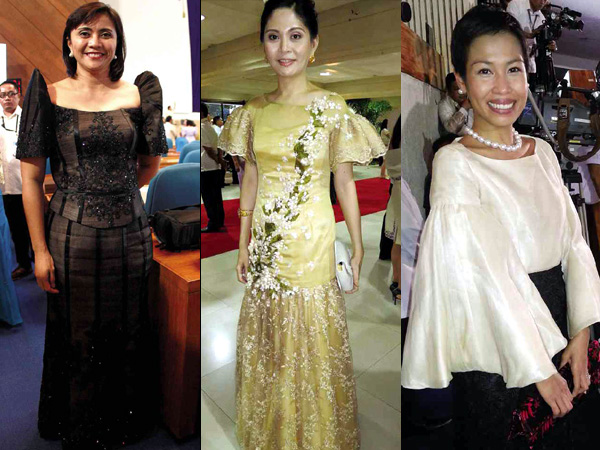
Based on online comments generated by an earlier front-page story that I wrote on the much-awaited annual fashion showdown that preceded President Aquino’s State of the Nation address Monday afternoon, not a few readers were appalled at the extent some VIPs, especially the women, would go just to grab the public’s attention.
One even took media to task for its seeming inability to “tighten its intellectual screws and realize [that] this [Sona] is not a ‘social event’ where fashion needs to be underlined and made worthy of commentary.”

In effect, the reader said, these guests could even be drowning out the President’s annual report and vision for the Filipino people with their eye-popping jewelry, tiered skirts, beaded bodices and embroidered hemlines.
But the reader was also conveniently forgetting one thing: Media, at least in a free and open country, is simply doing its job by mirroring the society it covers. It would have been more remiss on our part had we ignored the event as if it never happened.
The same thread also produced this seemingly inspired suggestion from another reader. Instead of guests spending untold sums on expensive designer fashion, “How about going all-out and wearing a barong or terno made of crocodile or snake skin?”
If guests were to take the suggestion literally, the reader obviously doesn’t know what he’s talking about. Since they’re quite rare, exotic skins, apart from harming innocent and endangered animals, can cost a pretty penny. And in some cases, they don’t, ah, photograph well.
When it comes to a subjective and touchy issue like fashion, I’ve learned through the years of covering it that it’s definitely much better and wiser to leave wearers, designers and observers to arrive at their respective opinions, illusions and conclusions.











































